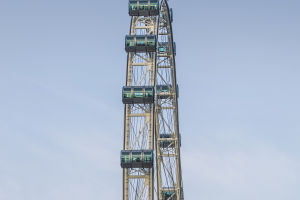The World Geopark is an incredibly precious natural resource, and it is of immense value to tourists as it takes a long time, sometimes even hundreds of millions of years, to form. One view of these wonders is not something to be missed in this lifetime.
Currently, there are 161 UNESCO World Geoparks in the world, with the famous Langkawi National Geopark being the first and only World Geopark in Malaysia, and even in the entire Southeast Asia region.
Due to the uniqueness of Langkawi National Geopark, coupled with the spectacular mangroves, legendary caves, exotic flowers, and other rich and diverse tourist resources, it is a must-see destination for anyone visiting Langkawi.
When visiting Langkawi National Geopark, the first place you should go is the mangrove forest. You can take a cruise along the river at the pier of Langkawi Geopark, where the banks are lined with mangrove trees that are deeply rooted in the earth. As the river meanders, it feels like you are going on an adventure through the dense woods, which is quite magical.
The ecological environment of Langkawi Geopark is excellent, and visitors can enjoy various flora and fauna, and they can even interact with them. Aside from the monkeys, a very popular activity here is feeding the red eagle in the air.
The Bat Cave is also an unusual and bizarre place to visit, where you can see hundreds of bats roosting on the top of the rock wall using the light of a flashlight. The stalactite wonders that took hundreds of millions of years to form look very exciting in the gloomy light.
It is necessary to maintain quiet throughout the entire process of visiting the bat cave, including before entering the cave, as it is so quiet that even the slightest sound can be heard clearly. Visitors must refrain from making too much noise because it will attract bats to fly over.
The geopark concept does not only emphasize geological formations and landscapes but also includes how local people can maintain and nurture geological sites through effective conservation and development of ecotourism.
Langkawi is part of West Malaysia, also known as Langkawi Resort Island. Langkawi is approximately 112 kilometers north of Penang and is administratively part of the Malaysian state of Kedah, and is geographically close to Thailand.
Langkawi was granted duty-free port status in 1987, and today, the island's economy is based on tourism, making it one of Malaysia's most famous tourist attractions.
The diversity of Datai Bay's landscape is reflected in its many beautiful coastal types: rocky beaches, sandy beaches, pebble beaches, abrasive platforms, sedimentary platforms, gravel dams, caves, and remnant islands. When walking on the sandy beaches with bare feet, visitors will feel that the sand is incredibly soft. Along the rocky beach, visitors will find many abrasive platforms with various structures "carved" into them.
The waves and abrasion have shaped the pebbles on the beach into semicircles, circles, and spheres over the years. As the internal structure of the rocks varies, some areas become protrusions due to the erosion of the never-ending waves, creating remnant islands.
Langkawi National Geopark is truly a unique and must-visit destination, and visitors should take the time to explore its many wonders fully. From the mangrove forest and the Bat Cave to the diverse landscapes of Datai Bay, visitors will be captivated by the natural beauty of this incredible destination.
However, it is also important to remember to be respectful of the environment and its inhabitants and to practice sustainable tourism to preserve the beauty of the Langkawi National Geopark for future generations to enjoy.


